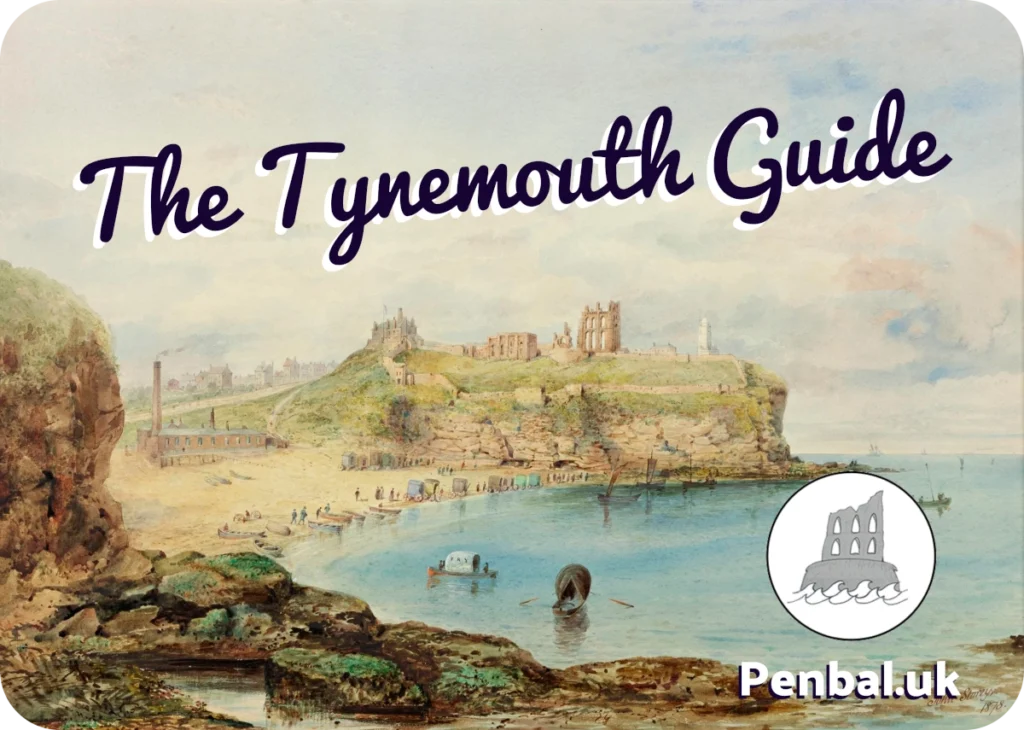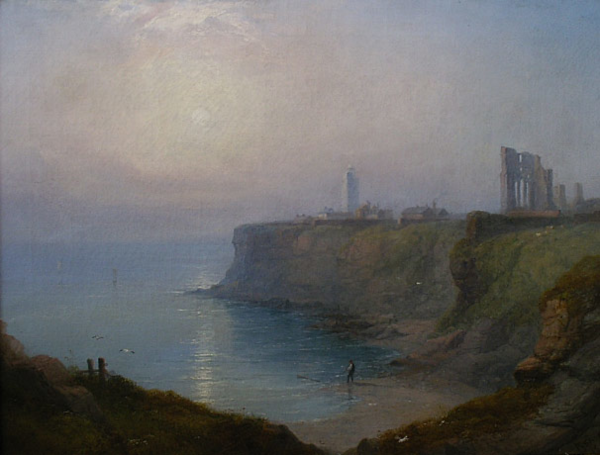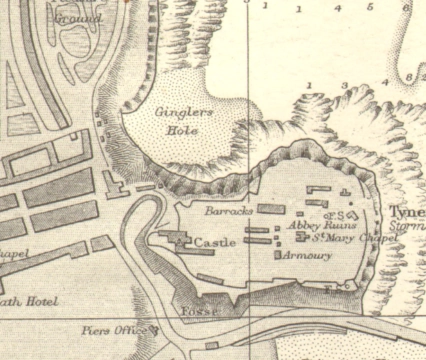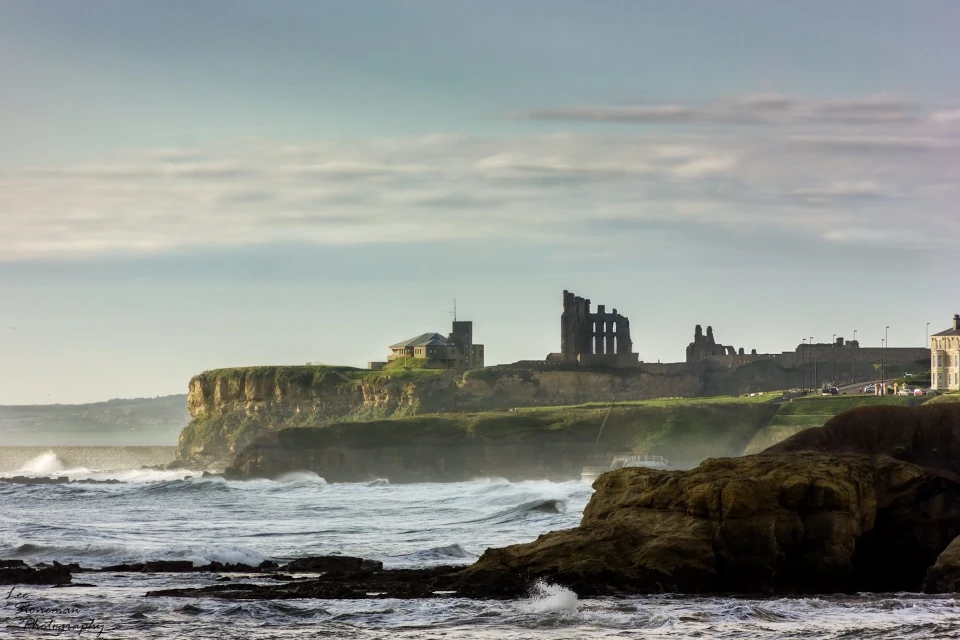Tynemouth Guide
Sea Banks
12. The Short Sands
More commonly known as King Edward’s Bay, this cove could well have been named after Edward I, the Hammer of the Scots, aka ‘Longshanks’, who is popularly portrayed in the film Braveheart. Edward was the first King to periodically base himself at Tynemouth and to muster his ships there, from whence he could invade our northerly neighbour. Edward’s wife and her retinue would reside at the Castle while he was away on campaign. He was also the first ruler to have a wall built around the Castle, much of which remains intact and was almost 1000 yards in length.
This beautiful bay has seen a lot of history: Vikings and various armies, shipwrecks and smugglers. Just imagine the camps with rows of tents and ships at anchor with all kinds of forces on the move over the centuries. There is a particularly famous painting by William Bell Scott, depicting savage Vikings attacking the beach and marauding up its banks to sack the Priory in 793. Imagine what a terrifying scene that would have been. The Viking invaders kept returning throughout the 9th century, with larger and larger armies each time.
Today, King Edward’s Bay is a Blue Flag beach, but it hasn’t always had lots of sand on it. When the Pier was built, a lot more sand accumulated here and in the same period, the river was dredged of 800 acres of sandbanks. Both of these feats were achieved by the newly-formed Tyne Improvement Commission and the spoil ground for the dredgers that frequent the river is still just two miles off the bay. These two undertakings have changed the nature of the way sand moves up and down the coast, so that now King Edward’s Bay is one of our region’s most idyllic beaches.
13. Landslip
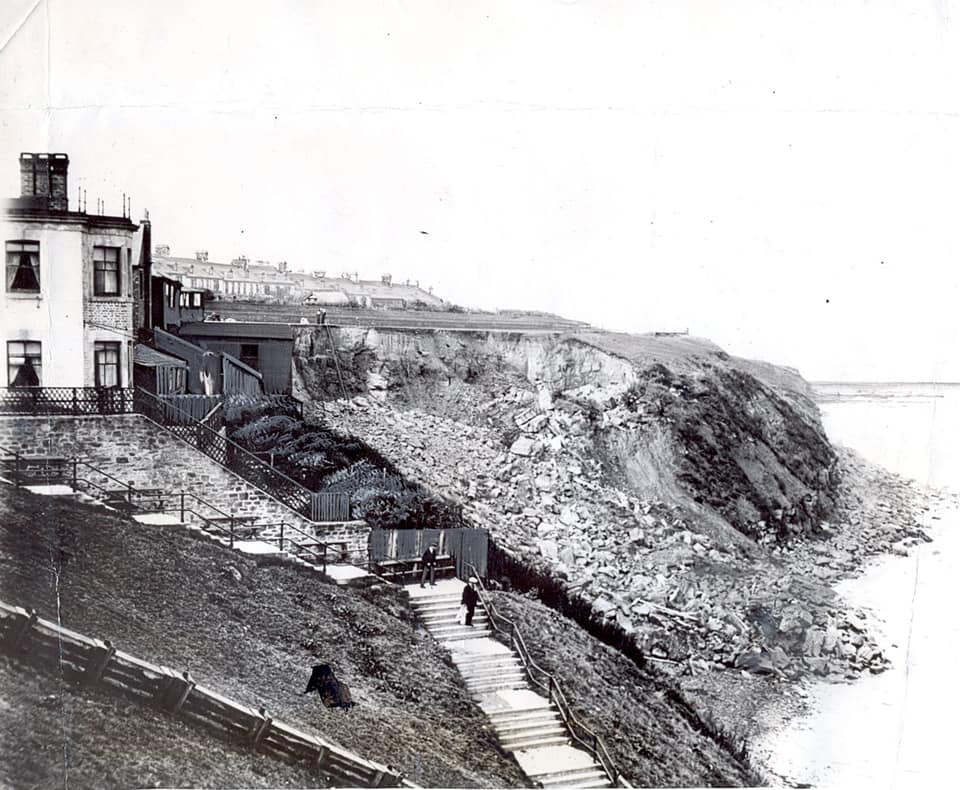
On the grass banks that enclose King Edward’s Bay there have been a number of landslips, especially in 1913 when the entire roadway between Sea Banks and East Street was swept down the cliff. It took 10 years to rebuild the bankside and erect the massive arches that you can see supporting the road. Another little piece of Tynemouth folklore is that this landslip was triggered by a postman knocking on the door of one of the cottages on East Street. The Post Office did occupy No. 1 East Street back then, so who knows? Maybe there was a disturbance caused by the posties that led to the bankside tumbling away…
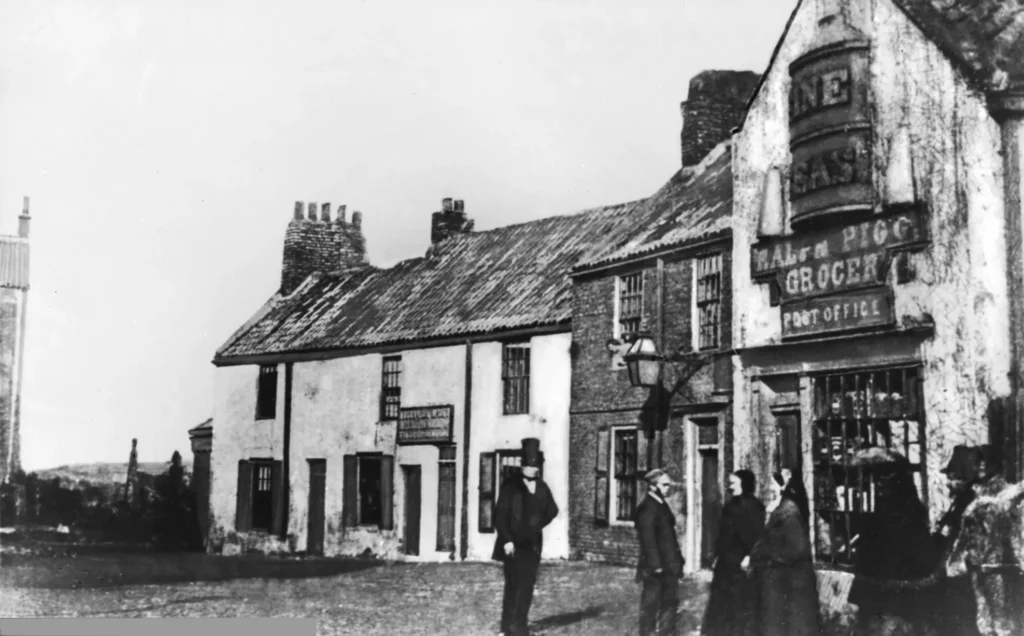
Sea Banks is still a problematic road and the landslip of 1914 was ultimately caused by an old well beneath it called the Bank Well. It was the continual seepage from this well that weakened the ground. So today, the road is still susceptible to breaking up and needs regular attention from the Council.
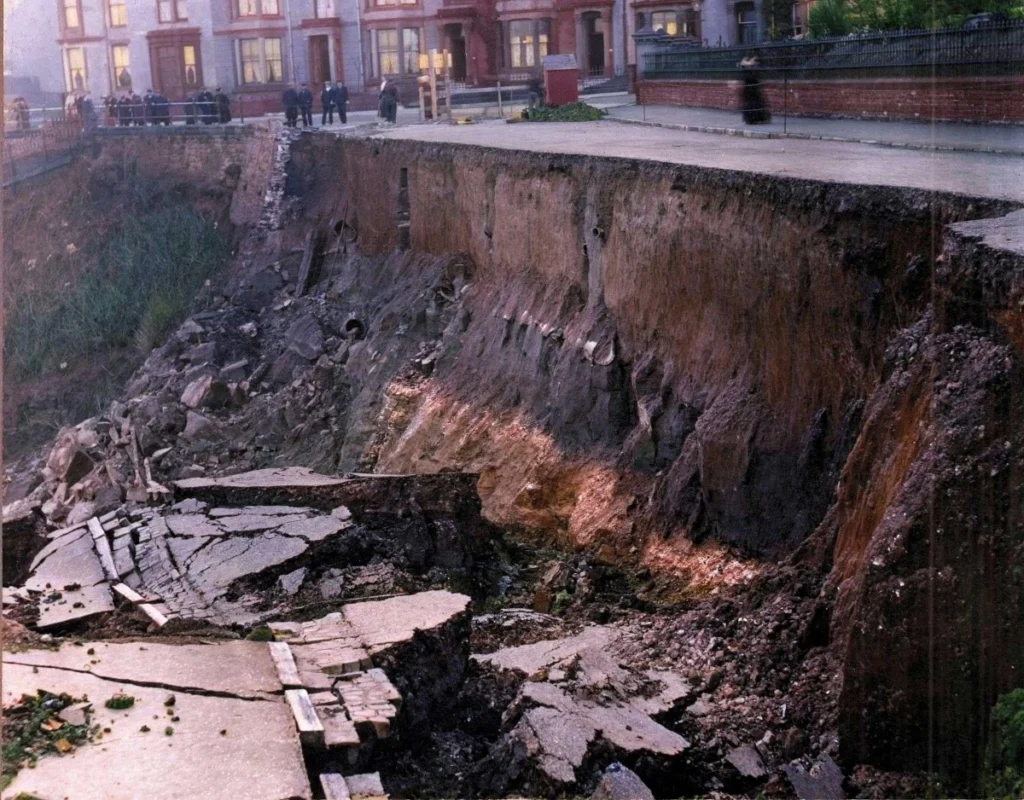
When the landslip occurred in 1914, people said at the time that it briefly exposed some of the smugglers’ tunnels that led to the cellars of the alehouses on Percy Street. Maybe there was a tunnel that went directly into the Gibraltar Rock at No. 2 East Street. We may wonder… But why is the pub overlooking the bay called the Gibraltar Rock? It’s a very old pub, while the Rock of Gibraltar itself has hundreds of limestone caves and tunnels, many of which are unexplored. The Rock of Gibraltar is a mysterious and intriguing labyrinth used by 18th century pirates and smugglers, while fittingly the Gib was known in the past as a smugglers’ pub…

14. Percy Gardens
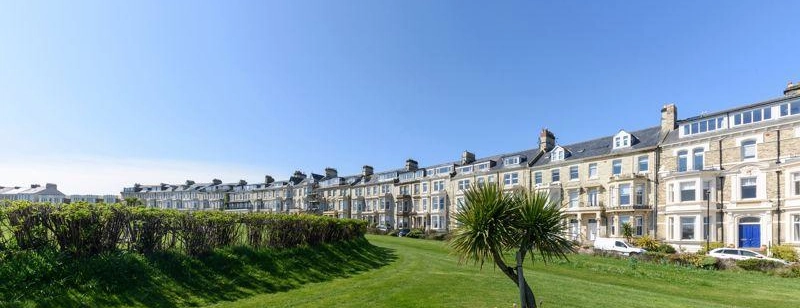
This is Tynemouth’s grandest street. It was built to exceed some of the residential crescents found in seaside towns like Brighton and Scarborough but also to emulate the famous ones of Bath, Edinburgh and London. The symmetrical crescented terrace was an aesthetic that really appealed to the Victorians and as such, Percy Gardens is really our showcase street. There also happens to be a very curious WW1 lookout tower built behind it.
These originally three-storey houses were developed in the 1860s to accommodate people who for the first time were able to live at the Coast in this pleasant and clean environment, while working in overcrowded and polluted Newcastle. This was made possible by the first commuter railway in the world, which arrived in the late 1840s and which still runs today in the form of the Metro. By the 1860s, lots of wealthy industrialists and merchants were able to afford such luxurious residences and enjoy the benefits of a townhouse at the Coast.
This period of 19th century economic and technological advancement is when leisure became a concept for the first time in mainstream society. You could say that Tynemouth was quite a poor village prior to the railway, cut off from everything but the sea. So these Victorian people really did build something splendid and new.
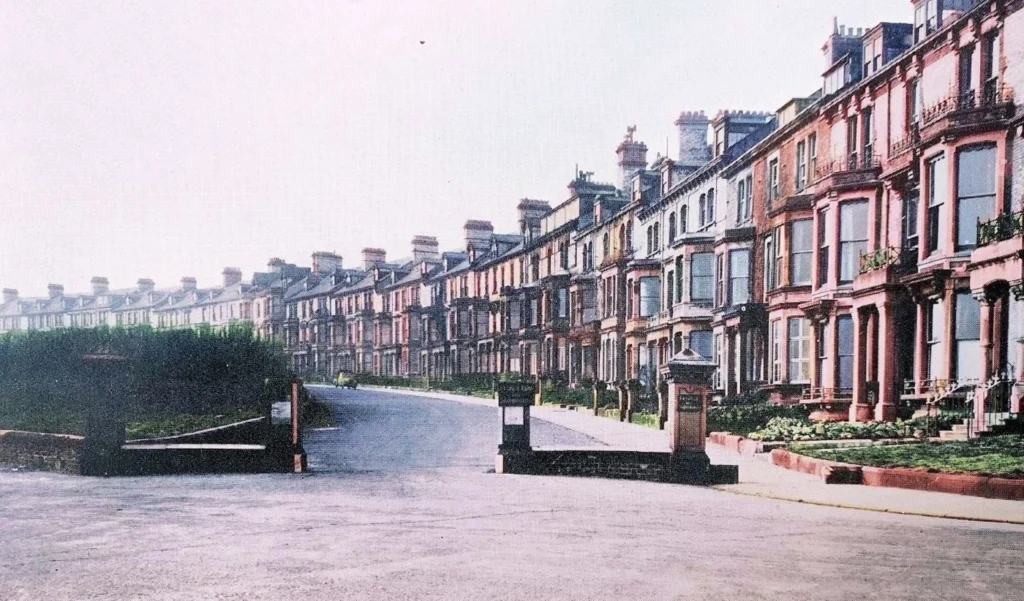
15. Jingling Geordie
If you look across the bay towards the Castle, you can see a doorway that’s cut into the cliff. This is what remains of an old edifice called the Whitley Tower, built by a man called Guy de Whitley. It was ordered by Edward I (mentioned above). Longshanks needed the tower to be built in order to watch for Scottish invasions, which is why the whole Castle was fortified in stone by him.
This Whitley Tower became a notorious smugglers’ den called Jingling Geordie’s Hole. Jingling Geordie was rumoured to be a shipwrecker who would go out onto the treacherous Black Middens rocks and have lanterns posted together that would lure ships onto the reef. He would then steal their cargoes and hide away in this secret and inaccessible hole.
For 200 years it has almost been a rite of passage for Tynemouth children to go down there, although I’m not sure kids these days would attempt it, nor should be allowed to. It’s a dangerous spot and a 19th century landslip took the roof off the inner section.
There is said to be a tunnel that goes into the Castle from the hole and this was blocked off by the Works Department in the 1940s. The tunnel was built so that Tynemouth Castle could receive supplies and weapons in the event of a siege. There were sieges at various points in Tynemouth Castle’s history including a notable one during the Civil War.
Jingling Geordie’s ‘Cave’ is probably the ultimate piece of Tynemouth folklore. He’s said to have a ghost that wanders the rocks at night, and the reason they called him ‘Jingling’ Geordie was because he still had the chains from his imprisonment fixed around his ankle, so you could hear him coming a mile away…
There’s been lots written about it and I’ve written a lot of about him here. There are lots of theories about who he really was (probably Cpt Thomas Armstrong from Cullercoats). But also, this was maybe just a spot for gambling and drinking for the youth of Tynemouth, and so in some ways things don’t really change that much in all the centuries here.

